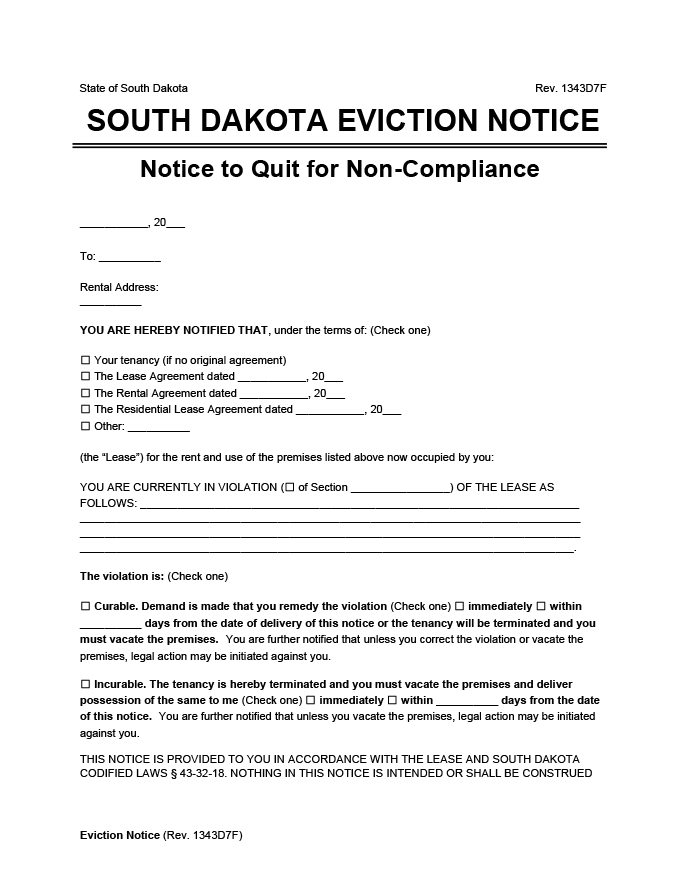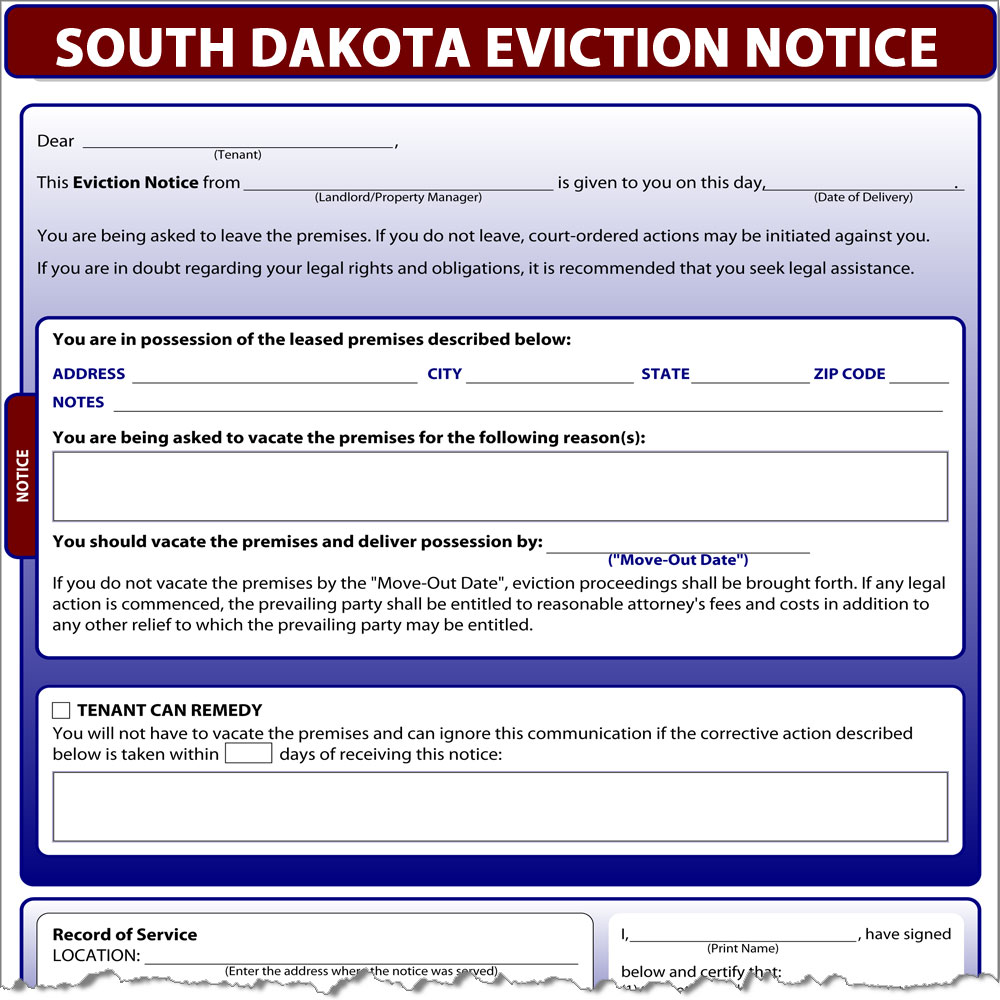"Understanding the Eviction Process in South Dakota: A Comprehensive Guide"
As a landlord or tenant, understanding the south dakota eviction notice
is essential in avoiding legal complications. Eviction is defined since
the legal procedure for removing a tenant from the rental property.
While eviction is usually a last resort, there are situations where it
becomes necessary. In this comprehensive guide, we will walk you through
the eviction process in South Dakota, including the reasons why tenants
could possibly be evicted, the different notices that landlords should
be aware of, and the court proceedings involved.

Reasons for eviction:
Under South Dakota law, landlords can evict a tenant for various reasons where they've violated the lease agreement's terms. This includes the following:
Nonpayment of rent: Tenants are supposed to cover rent on time, and failure to take action is grounds enough for a landlord to start the eviction process.
Violation of lease agreement: Tenants must adhere to the lease they signed, including not damaging the property, subleasing without consent, violating pet policies, and more. If the tenant violates the lease agreement, they are legally vulnerable to eviction.
Illegal activity: Any activity that violates state or federal law, such as for instance drug operations or acts of violence, can cause immediate eviction, even if the lease agreement doesn't mention it.
Notices:
Before a landlord can begin the eviction process, they should provide proper notices to the tenant. In South Dakota, these notices are as follows:
Pay or Quit Notice: A published notice to provide a tenant 3 days to pay overdue rent or vacate the premises.
Cure or Quit Notice: A written notice to give the tenant 14 days to cure a breach and other violation of the lease.
Unconditional Quit Notice: A written notice to eliminate an occupant with out a possibility of remediation, usually due to a severe breach of the lease agreement.
Court Proceedings:
If the tenant is unwilling or unable to conform to the notice, the landlord will then file an issue in court to begin the formal eviction process. The steps involved include:
Filing a complaint with the court in the county where in fact the property is located.
Serving the tenant a summons and complaint within three days of filing.
Appearing before the judge at a reading, where each party presents their case.
If the judge rules in support of eviction, a writ of execution is likely to be issued. The tenant will have up to 10 days to vacate the premises before a sheriff enforces the eviction.

Conclusion:
Understanding the eviction process in South Dakota is required for both landlords and tenants. If you're a landlord, ensure that you follow what the law states when wanting to evict a tenant. This includes providing proper notice to the tenant and not withholding essential utilities or changing locks. If you should be a tenant who faces eviction, ensure that you read your lease carefully and answer the eviction notice promptly. Understanding the laws of eviction can protect your rights and prevent legal complications in the future.
Comments
Post a Comment